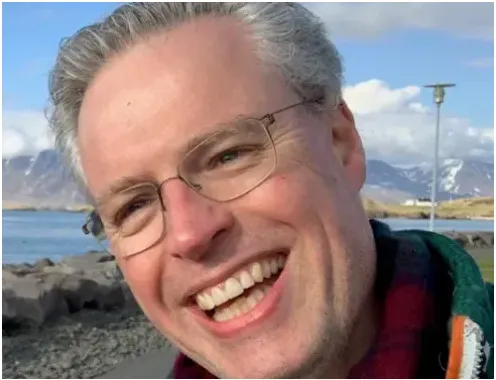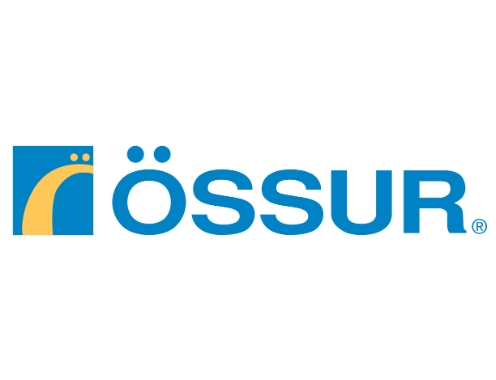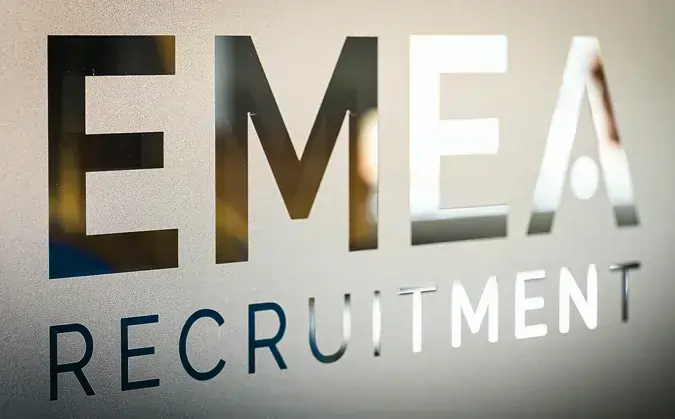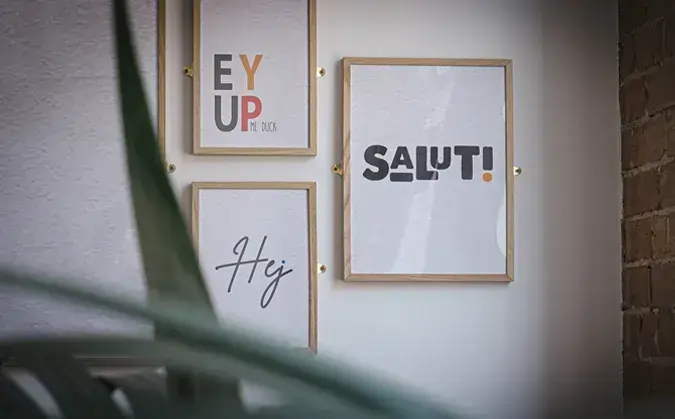Thijs Glasz - People Vice President EMEA & APAC at Össur


Thijs Glasz is the People Vice President EMEA & APAC at Össur in the Netherlands. He started his career in Law, before moving into the Human Resources function with LeasePlan. He specialised in Compensation & Benefits before moving to Össur in 2018.
What are the key drivers to success at Össur and what do you, as a business, watch the most?
We're a global company, originally founded in Iceland over 50 years ago. We develop, manufacture, and sell prosthetics and bracing and supports to medical professionals. Additionally, we operate patient care facilities around the world, which service those in need of mobility solutions. Prosthetics are basically for somebody who has lost either a hand, a finger, a knee, or a foot and most of our clients in that segment are elderly people who have diabetes or other related illnesses.
It's less trauma-related; trauma is about 15% of our business. Most of our patients and end-users are elderly people who suffer from cardiovascular issues. For some of them, it means that one day they wake up and have a toe that is black - it's horrible to say, but that's kind of what it looks like. People ageing in general is beneficial for our business, because they’re the people most in need of our products.
The real cool stuff is bionic hands - you put them on your hand and then you can grab and pick up things.
The other line of business is bracing products. Braces can be applied to the neck, elbow, hand, knee, or hip, or anything that you need help with - that's more for support. It is very much for people who are ill, who've had a sickness and are recovering, or it's people who are elderly and need support. For example, if you still want to play tennis when you're 75, then it’s great to have some support with your elbow.
We sell those two lines of business mostly B2B [business-to-business], as well. We sell to medical practitioners within various healthcare settings, anywhere from a university centre, hospital, or rehabilitation clinic, which is either private or public. It depends very much on the country you are in.
If you are in need of a prosthesis, you will be looking for an orthopaedic surgeon in a specific healthcare setting. You go there and there will be somebody helping you and figuring out what it is that you would need, and one of the lines or products that they offer is probably ours.
The bracing products are slightly different. We have many competitors on the market. You can buy them for a low price over the counter or on Amazon, but ours are clinically proven, as you can imagine. We sell them mostly through healthcare settings.
The healthcare settings and reimbursement differ between countries. For example, the healthcare setting is like what the NHS [National Health Service] is doing in the UK - and we work with national health services all over the world. They are very important for us. The local reimbursement systems make sure that the expenses of the patients are paid for.
In some countries, there is no reimbursement for our products; it's mostly private pay. It's a different set-up, so there you also need to tailor your communications and your branding differently.
Did the business start focusing on the two different product lines, or did it start in one area and then develop and diversify into the other?
It started in prosthetics more than 50 years ago. The company was founded by a man named Össur Kristinsson, who was an amputee himself. That's where our name comes from – Össur is his first name.
The company has grown organically and also through acquisitions. We have had a lot of natural growth in many markets, and acquired companies in many countries of the world, often established patient care facilities. We now operate in 36 countries and employ over 4,000 people.
It’s amazing when you hear the story of one person setting something up because of something personal in their own life and then it's gone on to be the organisation that it is today. Again, that's inspiring to hear those stories.
It's nice, because it’s also our heritage as a company. Obviously, the founder is from Iceland, a small country with approximately 370,000 people. Reykjavik is the capital city, with around 250,000 people. While our head office remains in Reykjavik, we are a global company and our revenue comes primarily from North America and western Europe, and we are growing in emerging markets.
We have two large regional centres based in our largest market areas. One is in Los Angeles, in Irvine, where we tailor to the Americas market and Mexico, and then we have Eindhoven in the Netherlands, which is close to the Belgian border. From Eindhoven, we service our EMEA and APAC regions when it comes to products and services.
If you can retain that presence in Iceland from an economic perspective and creation of jobs, you know you're still contributing to where the organisation originated.
That's absolutely right. The company is not well known to many people since it tailors to businesses, but we are moving into B2C [business-to-consumer], as well. When I started here five years ago, I’d never heard of the company. So, somebody says, “There's an opening there,” and then you slowly get acquainted with what the company does. But, in Iceland, it's a very well-known company.
Another large company in Iceland is Icelandair, the airline, and there are other large companies operating from there. So, if you are in Iceland and you say you work for Össur, they say, “Oh, we know you.” Everybody knows each other anyway.
But, in the Netherlands, most people will not have heard of it - it's the way it is. We do a lot of branding and communication naturally and we certainly keep improving this when it comes to selling and finding people to work here
Do you recommend visiting Iceland?
I've been to Iceland a few times and I actually lived there for nine months with my wife for the last year. This was kind of an exchange, and I had an opportunity to stay there.
It's a fantastic country. From a cultural perspective, it's wonderful when you work in a company that is Icelandic in nature. We're a global company, but so many things are related to that heritage.
It's fantastic to see where we come from as an organisation and to have face-to-face interactions with colleagues in Iceland and understand the company culture better. Nordic countries tend to appreciate consensus building, close collaboration, and harmony and you see that everywhere in what we do.
My experience is that everybody in the company is extremely respectful to each other. I’ve worked for a few American companies before, and I can tell you there is a difference. The company culture is one of harmony, and the culture is positive; people like working here. With that positive wind in the back, you can work from a good base, and gets things done easier.
This company culture assumes that we prefer to work around guidelines and philosophy and to some people this may feel less structured. We're a complex, metricised organisation, so the structure sometimes is a challenge for us.
I guess it's trying to find that balance of enough structure so that you’ve got clarity, but without losing that DNA that you mentioned.
Specifically at the pace we're growing. We've been growing a lot through acquisitions. I looked up some numbers last week, and I think 15 or 20 years ago we had a revenue of around 75/100 million, and now we're basically heading towards 1 billion. So, we're growing really quickly.
If you compare us with the big multi-nationals, we're still mid-sized. But growing pains are what we’re dealing with every day and we're still enquiring, we're still doing new things, we're going into new markets, so it's a good place to be.
But, with growing, you probably also need new infrastructure and new leadership and new ways of doing things. I think we're at the tipping point right now where we would like to grow more, but that requires us also to think differently.
We have a product business; Össur is a medical devices company and we make prostheses and braces that we sell. Most of the recent acquisitions that we've done are in areas we call clinics; we're doing forward integration.
So, on top of B2B, we're going to B2C [business-to-consumer]. We’re acquiring the clinics where patients and end-users come for their prosthesis or their braces - and we're not the only ones doing it; our competitors are doing the same thing. One of the strategic reasons that we’re doing it is to make sure that we gain market share and this way can provide best-in-class services to patients and end-users.
This is what our clinics’ employees do every day. It is healthcare and we need to make sure that the care of the patients is our first priority.
Again, we’re not the only ones involved in forward integration. If you look at the people perspective, we need to hire clinicians, and physiotherapists, technically skilled people - different skills and competencies come into the business. It is our job to think about the best way how to develop our employees, how to reward them and keep them engaged, how to provide services to employees, how to train them - those are all things that are on our agenda, and we want to adopt one way of doing it, but differentiate where we need to, as well. That is a challenge. It's a good one to have, but it’s not always that easy.
Was that always the plan for the business or was it because of the competition going down that route that was the catalyst to move into that space?
It's a bit of both. We've been thinking about this for a while and some of those acquisitions we have done for over a decade in countries like Australia and in Nordic countries. We've owned many of those clinics for a while.
This means that, as an organisation, we must continue to be flexible and agile, and make sure that the different groups of employees collaborate well with each other and determine which HR services we provide to our employees globally.
In the existing product business that we have, in our Americas, EMEA and APAC markets, we have a high-touch HR model. This means that we have a good number of HR people supporting with recruitment, learning, organisational development, business partnering, and related services.
In the clinics, it's slightly different - it's a bit like in other industries where you typically have one HR Business Partner for a large group of employees (approx. 500) and many services come from a shared service centre. The support from HR business partners relates mostly to certain annual cycles like performance management, talent reviews, training and onboarding, etc. Our challenge is bringing these two models closer together and this requires thoughtful resource planning and managing expectations.
How far are you on that journey?
For our function, it's fairly at the beginning and that also has to do with the organisational structure we have in the clinics. It’s still very much intact the way it has been and, although it is part of our organisation, some of them operate as a standalone in some ways. There’s a drive to find synergies and work towards one operating model. Commercially and also in Marketing. For instance, in the Netherlands, we have a fair number of people working in Marketing. That can be marketing communications, product marketing, upstream, downstream marketing, etc.
If you look at the clinics, the Marketing function is embedded in the Sales organisation and we do not have separate Marketing teams in the clinics. We have it centralised in our product business, so the question is, how we bring those closer together, who has the mandate to do what, and where do you find each other?
We're in the identification phase right now, which is good to be in, and at the same time in some operations - like in Australia - they’re already operating as one unit and have been for quite a while. In that sense, we can probably learn from that.
It would be good to understand your approach to Diversity & Inclusion. How can leaders create a nurturing environment that is inclusive?
DE&I [Diversity, Equity & Inclusion] is big on our agenda, and it started becoming more apparent in our American business a few years ago, so they’re a bit further ahead when it comes to governance around DE&I, involving business leaders, etc.
Also, reporting wise, you have other requirements in the US than you may have in Europe, specifically when it comes to diverse groups. Diversity obviously is key, but what we try to focus on is foremost inclusion. If you focus on inclusion first, we believe that diversity will somehow follow.
We aim to have a diverse workforce in many ways. Diversity of thought is very big for us and we approach this as part of team development. We make sure, when leaders are looking for new people, that we have a diverse team of people working together in a high-performance format.
In some markets, DE&I can be tough. In healthcare, for instance, in some larger countries in Europe, our workforce is male-dominated, and we want to get away from that somehow. In that sense, I think there's still a lot to do.
Where I work in Eindhoven, we're very lucky to have over 20 nationalities in our distribution centre and our shared functions; we have a lot of diversity, which is fantastic, and we're creating structures around it that are inclusive in nature.
One tool we have used is Develop Diverse, a Danish software tool. It's a tool you can use to make your communication language more diverse; that can be on job advertisements, marketing materials, reports - whatever you have out there. Some words may be non-inclusive or maybe exclusive for specific groups, which can be women, the elderly, but also people who are physically disabled or neurodivergent. Our communications become more diverse in nature, so in the end we attract more people.
For example, you can consider using an alternative to a requirement like “excellent communication skills,” as there may be people who do not master English as a first language. You can alternatively say “professional language skills,” which is appropriate, but slightly different. This way your pool of talent becomes much bigger and hopefully also more diverse. You have more to choose from, specifically in a world where it's tough to get good people for your jobs.
One other thing that is interesting, and somebody taught me this, is job descriptions. The old-fashioned way of setting job descriptions is very much, “These are the requirements. A certain university diploma is required; we require having excellent skills in different areas”. These are often listed in bullet points. Doing it this way some potential candidates may feel that they do not tick all those boxes, so they will not apply. If you describe the requirements in a different manner, e.g. in a paragraph, and say, “These are skills you need to have…,” candidates may think that they may not tick all the boxes, but overall the role fits their skills and expertise, and they believe they are the right person for the job. If you put it down in bullet points, you may miss some good candidates. These are just simple things where you think, why didn’t I think about this before?
I also think it's incredibly valuable to ask younger people what they think. If I read materials, I try to look at it from what my kids would think. Younger employees tend to look at this completely different and of course they are our future leaders. There is nothing against having a young group of people reviewing some of those materials once in a while. Why not use your younger workforce to help you draft your communication material?
Do you think there are things that Össur does particularly well to create an inclusive environment?
It starts with your vision and how you are going out in the market. As I said before, we're not that well known in all our markets. We need to have eye-catching branding materials to say, “This is the company I want to work for,” and I think we're doing that extremely well. The branding materials that we have in place are really spot-on and we have a great product to sell, as well.
The purpose of our company is really clear: the tagline Life Without Limitations is attracting a lot of people, which is really positive. But then, of course, you need to make sure that people really are warming up to your company.
What we're trying to do with hiring managers is encouraging them to use inclusive language in the questions they ask. It's not just me as an HR professional thinking, they need to do this; it is the hiring manager who is sitting down with candidates and should ask the right questions and use the right approach. We must make sure that the language they use or the way they appear and behave is inclusive, as well. We are focusing on that.
We've also done a really good job in upgrading our facilities. This building where I am right now is a state-of-the-art building from 2017 and, if we get people in here, they really want to work here. It's a fantastic, open space with a lot of glass, with inviting meeting rooms and common spaces. A lot of people feel it has a positive vibe. It’s sometimes hard to describe, but that usually helps a lot with bringing people in. In COVID times, for the first time in my life, I hired a lot of people online, which worked out well. Apart from that, we have done impactful renovations to offices in most parts of the world.
How did it impact the business during COVID when we were all remote for a period of time?
It helped us commercially and internally. Commercially, we're now doing way more with our customers online. You need to make sure they have the right equipment to collaborate with you. We're doing that in all of our markets, which I think is really positive. We also apply this internally when hiring people, and in many other meetings.
Apart from the people who really need to be on site, we're extremely flexible to working remotely; we have a guideline of being in the office two to three days a week. Some people who live a bit further away from the office are here a few days a week which works for us.
“Be here when you need to be here.” Some people love to be on site; they may live around the corner, they come every day, or their house is too small, or they don't want to work in a home environment. That's fine and everyone's welcome.
I live more than 50 miles away from the office, so I do not commute to work every day. Luckily, in my role, I can do this. I'm connecting with individuals all over the world and I am in the office when I need to be here and when I think it's really key to be eye to eye with people, or we have certain meetings or events. We're very flexible in that sense, not just here in this office in the Netherlands, but also in other offices in other regions.
I’m hearing more companies starting to ask people to come back in five days.
I think the jury is out on that. Personally, I think we are at a point of no return. Hybrid working is absolutely there to stay and you can fight it, but I think you can better facilitate it and - maybe it's the wrong word, but - lure people back into the office for a good reason. Make it an attractive place to be and then people will likely come by themselves.
What helped us in the COVID times is, when recruiting, you focus for talent within a radius of 20 miles around the office - it's now 50 or 60 miles - so, some of the people we hired in Amsterdam or in The Hague commute to Eindhoven a few days a week, which is still quite a drive. Are you now going to say, “You need to be in the office five days?” If you do, then they're gone. I don't think that's the way to go. I like that we are able to attract a wider workforce. In these times, it's extremely difficult to find people and this policy of flexibility helps us find the right people and have a bigger pool to work from.
I think from a diversity perspective, as well, it's about doing everything you can to attract as wide an audience as possible.
It does require a different style of leadership and management; you need to be really clear about that and what it means. As a leader, you’d likely need to sit down with your team and say, “We're going to do more hybrid work, let's agree on some moments that we’re all together and how we're going to collaborate.” That means, if you're working from home, you can be reached at certain times, while respecting that people are also doing some stuff at home once in a while. You should be very clear about that.
Also, I think it's important when you are managing people that people who come to the office more are not getting more attention and thus receive higher performance ratings: “I’ve seen you more, I know what you can do,” and - on the other hand – “It’s okay, but I don’t really see you enough.” Then you’re going to disadvantage people – specifically, groups who may have circumstances why they cannot come to the office as often. I don't think that is fair.
I'd love to get your insight into where you think the profession's going. What you think it might look like going forward?
One trend in our time right now is that many companies are not just customer-focused anymore, but are very much employee-focused, as well. That has to do with the fact that it's hard to find people and I think everybody understands how relevant the right skills are in an organisation. In many Sales and Marketing organisations, it was always customers first. I believe we're moving away from that and are giving more value to employees. The question is: how are you going to make that work?
To make employees more valued and retain them better, you probably need different goals in your business models and make sure that managers and people in the company understand that. I think that's a key thing that organisations need to think about – think more employee centric, instead of only customer centric. Obviously, customers do come first, but create a better balance with your employee base.
The other thing is pay equity/transparency, which is incredibly important. I come from a hard HR background, I was in Comp & Ben [Compensation & Benefits] roles before, and I see pay moving towards internal equity. It comes back to DE&I, which we talked about.
Previously, many companies thought, “I just want to make sure we are paying people to market and the local benchmark.” Well, the benchmark was always outside and related to other companies. But it should not only be about other companies, but about internal relations. Are you paying Kate the same as you do Brian? That becomes more important, and you should be transparent about it. There are many laws changing in this field, as well. There is an EU directive coming up and, as of 2024, pay transparency is going to be big on the list for many companies in Europe.
It means we need to be more transparent about how we pay our people internally and how to go about finding people and putting salary ranges in adverts. You are not to ask candidates about their salary expectations anymore in interviews. Instead, you need to set yourself up differently when it comes to pay and, if you don't do that, you're going to lose out on talent. That's a big trend.
And digitalisation is very important. For our business, because we do many things in a digital manner, our products, our systems, but in HR, as well. For us, data analytics is key; we've got various analytics teams at work and we will likely increase that in the future due to business requirements. Technology will continue to drive our decision making and forecasting. So, automation, robots are the future… we should think about own roles and how those match these new innovations. I do think that analytics and our systems are going to have a huge impact on how we do our business going forward.
We are forced to align ourselves with new technology and trends and should not resist it somehow. I talked about younger people earlier on - how younger generations are thinking about these things. It's fantastic how younger team members connect basic systems more and quicker to each other than people of older generations. That's helping us, as well. We have teams in place which are diverse and are proactive in suggesting new ideas themselves and how they can best execute on it.
Was there anything else that you wanted to comment upon?
Coming back to what I told you earlier about this clinics business and product business. We're basically moving from a product organisation to a healthcare company and with that comes social responsibility, and that's branded in our DNA, as well. It also comes back to how we’re branding ourselves so we attract customers and end users to our clinics.
Branding is really key. Not just branding our products, but the overall employer brand and how we put this out to the market. We are mid-sized and in many places not well known in the market, so we need to continue promoting ourselves in the markets we operate in. We have many brands out there, and they differ because of the fact that we acquired many companies in the past. We have, for instance, sites in Africa, Europe and in South America, and if you go to one of those sites they may still call themselves by the brand name that we acquired some years ago. It would be good to have some uniformity when it comes to how you do things and how you brand yourself, while ensuring that we are locally competitive.
All in all, many good challenges to have and a dynamic, successful, and fun company to work for.
Thank you to Thijs for speaking to Katie Insley, Associate Director in our Human Resources recruitment team in the Netherlands.
Views and opinions contained within our Executive Interviews are those of the interviewee and not views shared by EMEA Recruitment.






You can also use your social account to sign in. First you need to:
Accept Terms & Conditions And Privacy Policy